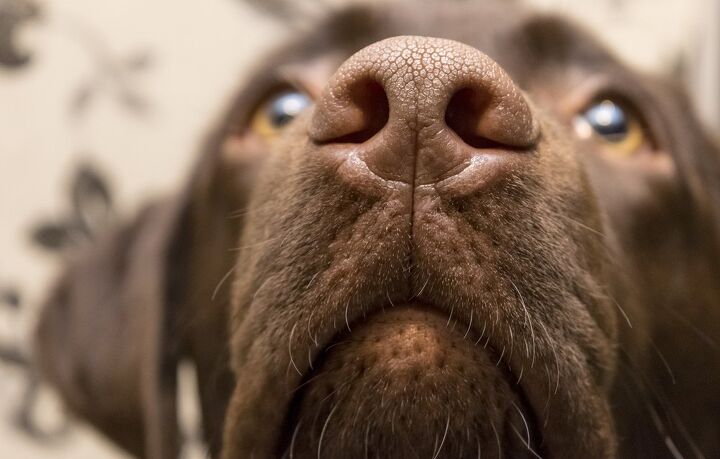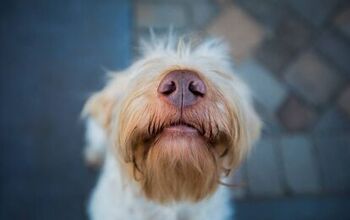How to Treat a Dog’s Dry Nose

What you may not realize is that, in addition to smelling, your dog’s nose also helps him regulate his body temperature and drain excess tears. When you think of your dog’s nose, you probably picture it cold and wet, so what does it mean if your dog’s nose is dry? Keep reading to find out.
If you notice that your dog’s nose is warm and dry instead of cold and wet, you might be concerned. Veterinarians say, however, that these signs alone are not enough to indicate a problem. Your dog’s nose is covered in skin and it can dry out if he doesn’t lick it often enough or if he isn’t drinking enough water. Most dogs lick their noses to help them decipher scents – they sniff to pick up the scent, then lick their nose to transfer the information to the brain to decipher it. Your dog’s nose could be dry simply because he hasn’t had the occasion to use it.
Related: Quiz: Do You ‘Nose’ Your Dog Breed Nose?
Though a dry nose isn’t always an indication of a problem, sometimes it is. When your dog has a fever, he could develop a dry nose. He could also develop a warm, wet, and runny nose as well – it simply depends on the condition. It could also be an indication of a problem if your dog is licking his nose too frequently. This is sometimes a sign of a neurological problem, excessive anxiety, or a reaction to some kind of skin allergy. If excess nose licking is paired with sneezing or coughing, your dog is probably sick.
If your dog’s nose is dry, it could be related to any number of things. Some diseases that cause dry nose in dogs include autoimmune diseases like pemphigus and lupus. Your dog could also develop a dry nose in response to an allergy to food, pollen, mold, or other allergens. If your dog has an allergy, his nose may also be red and swollen in addition to being dry. In the summertime, a dry nose could also be a sign of sunburn – this is particularly common in dogs with pink noses. In other cases, it may simply be an anatomical thing – flat-faced breeds have a harder time reaching their noses with their tongues.
Related: Easy-To-Understand Cartoon On How A Dog’s Nose Can “See”
The best treatment for dry nose in dogs depends entirely on the underlying cause. If your dog is dehydrated, try moistening his food with water or broth – you could also add some wet food to supplement his kibble. If your dog is sick, talk to your veterinarian about the recommended course of treatment. For autoimmune disease, your dog may need to undergo testing and potentially a biopsy to identify the disease and to determine the best course of treatment. For allergies, changing your dog’s diet or treating him with anti-histamines could help.
As a dog owner, it is your responsibility to know what’s normal for your dog and what’s not. If your dog’s nose is normally fairly dry but he still seems healthy, it may not be cause for worry. If, however, your dog’s nose is usually wet and it suddenly appears dry, you might want to check it out.

Kate Barrington is the loving owner of two cats (Bagel and Munchkin) and a noisy herd of guinea pigs. Having grown up with golden retrievers, Kate has a great deal of experience with dogs but labels herself a lover of all pets. Having received a Bachelor's degree in English, Kate has combined her love for pets and her passion for writing to create her own freelance writing business, specializing in the pet niche.
More by Kate Barrington























